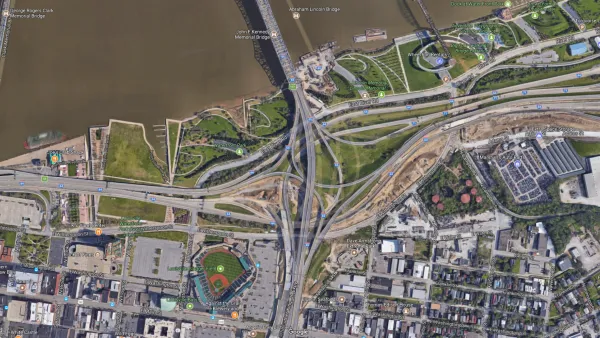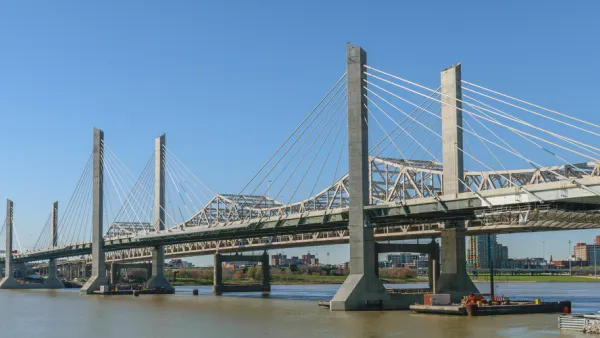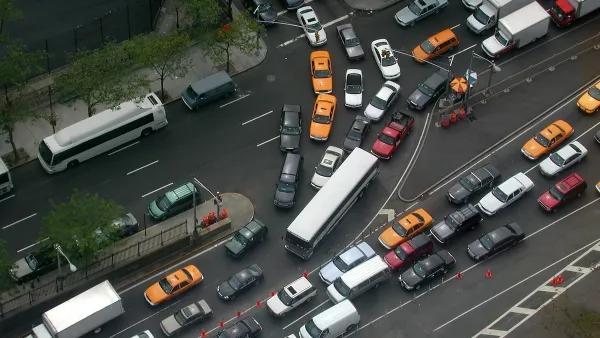Many in the urbanism community were shocked to see the scale of the recently completed "Spaghetti Junction" in Louisville, but the tolling system that will fund the project is just as critical to consider.
Joe Cortright provides context to the news about the recently completed Louisville-Southern Indiana Ohio River Bridges Project, which has quickly gained a level of notoriety thanks to a series of aerial photos of the project's "Spaghetti Junction" released by the Courier-Journal.
According to Cortright, however, "there’s another feature of the new bridge project that we think may be even more egregious than the concrete pasta of the re-built interchange: the new tolling structure that will repay the cost of building the new bridges."
Before explaining the tolling system that will help fund the construction of the bridges, Cortright explains the long planning history that created the Louisville-Southern Indiana Ohio River Bridges Project, but to summarize one main point: the Louisville area now has five bridges crossing the Ohio River. The first problem with the new tolling system is that some of those bridges will be tolled, and some won't.
A larger problem, however, comes from the commuter discount, which creates incentives for driving more frequently, especially toward the end of the month. Then there's the flat rate drivers will pay to cross the river: "since the proposed Louisville tolls don’t vary by time of day, you pay the same price whether you use one of the new bridges at the height of the rush hour, or in the wee hours of the morning when no one else is one the road. This flat-rate tolling structure misses a major opportunity to better manage demand and improve the overall functioning of the transportation system."
Cortright concludes by predicting neither revenue nor congestion will be improved by the tolling system that will go into effect December 30.
FULL STORY: For whom the bridge tolls

Analysis: Cybertruck Fatality Rate Far Exceeds That of Ford Pinto
The Tesla Cybertruck was recalled seven times last year.

National Parks Layoffs Will Cause Communities to Lose Billions
Thousands of essential park workers were laid off this week, just before the busy spring break season.

Retro-silient?: America’s First “Eco-burb,” The Woodlands Turns 50
A master-planned community north of Houston offers lessons on green infrastructure and resilient design, but falls short of its founder’s lofty affordability and walkability goals.

Test News Post 1
This is a summary

Analysis: Cybertruck Fatality Rate Far Exceeds That of Ford Pinto
The Tesla Cybertruck was recalled seven times last year.

Test News Headline 46
Test for the image on the front page.
Urban Design for Planners 1: Software Tools
This six-course series explores essential urban design concepts using open source software and equips planners with the tools they need to participate fully in the urban design process.
Planning for Universal Design
Learn the tools for implementing Universal Design in planning regulations.
EMC Planning Group, Inc.
Planetizen
Planetizen
Mpact (formerly Rail~Volution)
Great Falls Development Authority, Inc.
HUDs Office of Policy Development and Research
NYU Wagner Graduate School of Public Service




























